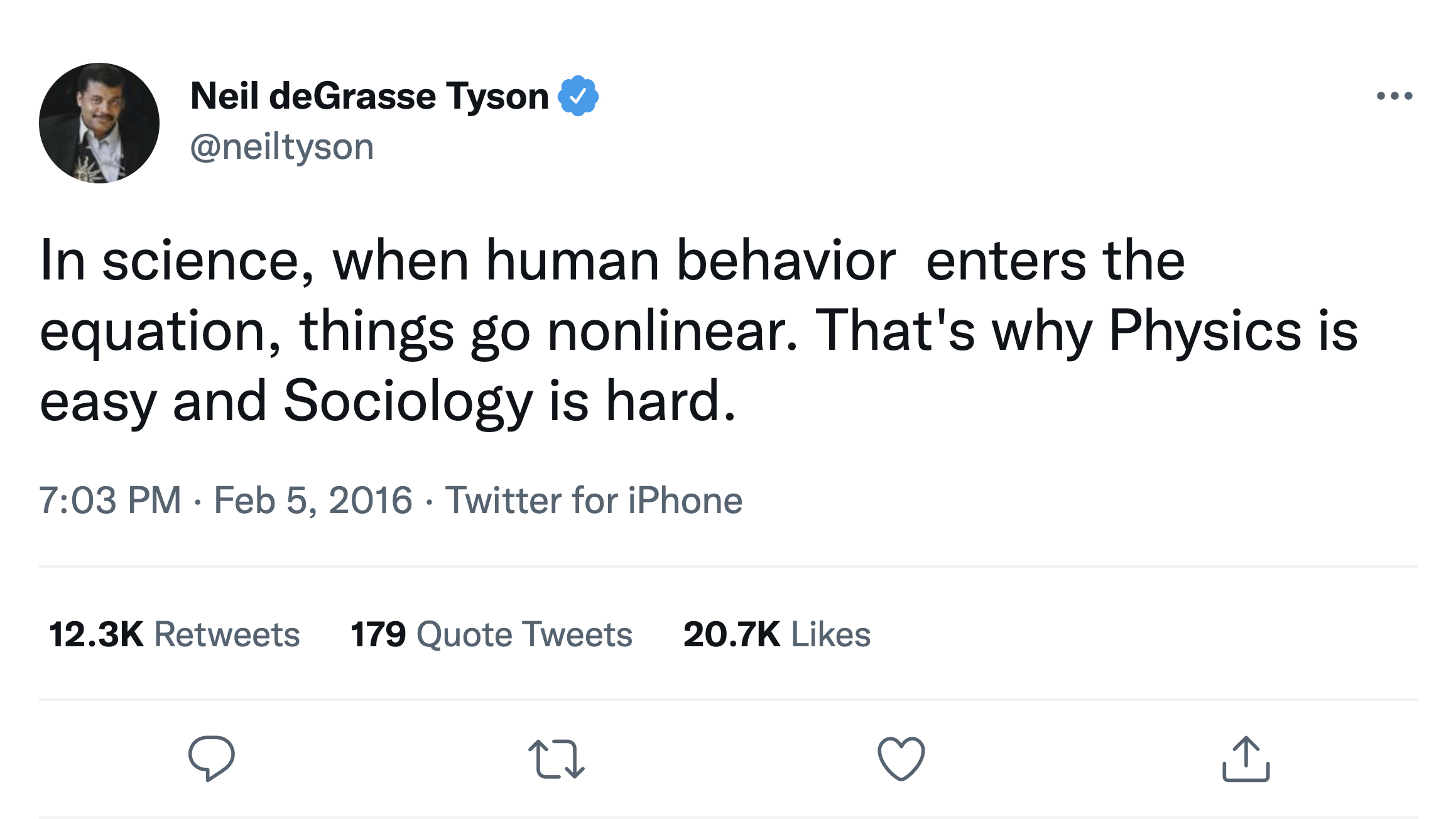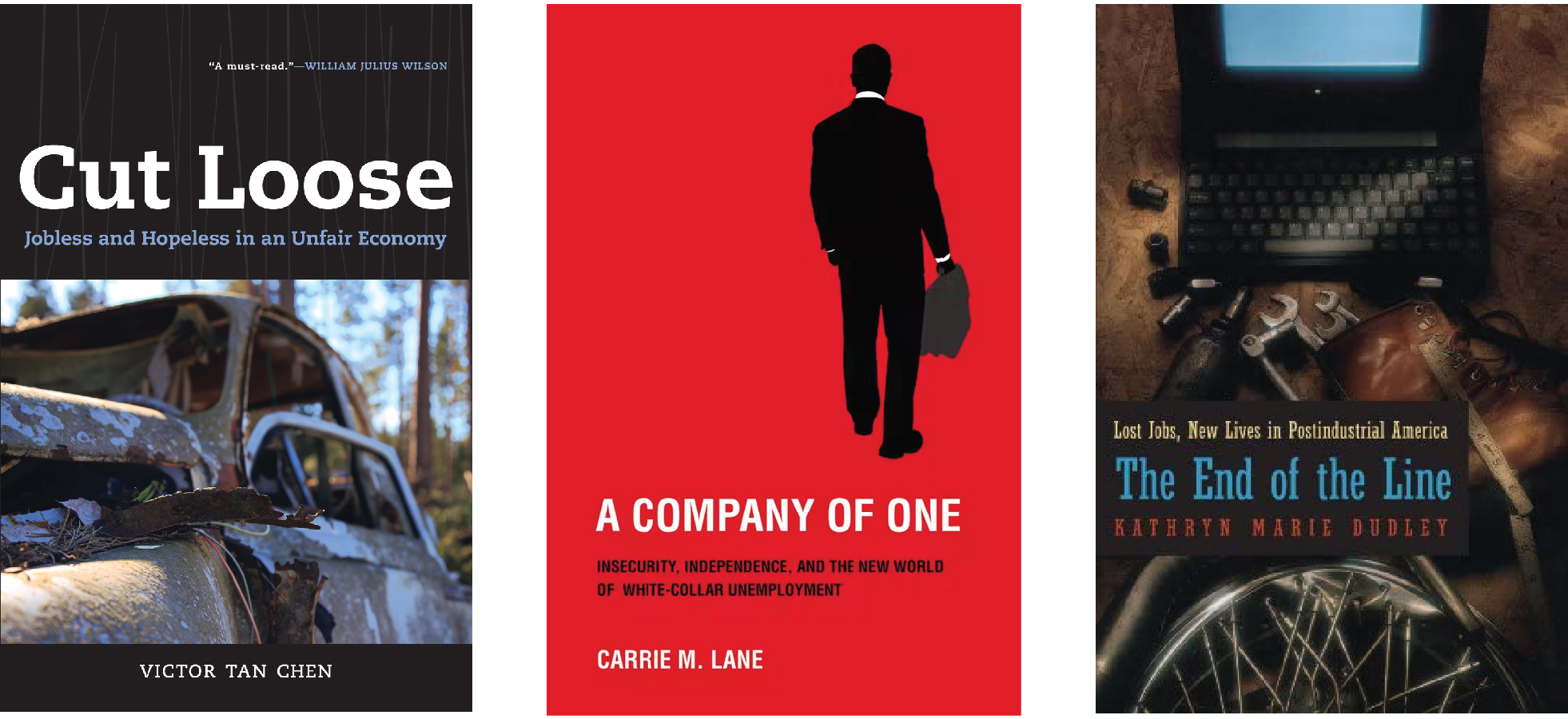1. Introduction
1.2. Sociology as a Social Science
Learning Objectives
- Understand how sociology is a science and how it differs from other sciences.
- Understand that social life can be understood as a series of patterns, even if exceptions exist to those patterns.
- Learn the difference between qualitative and quantitative methods.
Science can be grouped into two broad categories: the natural sciences and the social sciences. The (sometimes called the “hard sciences”) are concerned with naturally occurring objects or phenomena, such as light, objects, matter, earth, stars, or the human body. They include disciplines such as physics (the science of physical objects), chemistry (the science of matter), astronomy (the science of stars and other celestial objects), geology (the science of the earth), and biology (the science of organisms).
In contrast, the are focused on studying people or collections of people, such as groups, firms, societies, or economies, and their individual or collective behaviors. Social sciences can be classified into disciplines such as economics (the science of firms, markets, and economies), psychology (the science of human behaviors), political science (the science of political systems, behaviors, and thought), and sociology (the science of social groups and social life).

The natural sciences are different from the social sciences in several respects. To a greater extent, the natural sciences have the ability to be very precise, deterministic, and independent of the person making the scientific observations. For instance, a scientific experiment in physics, such as measuring the speed of sound or the refractive index of water, should always yield the exact same results, regardless of the time or setting of the experiment or the person conducting it. If two researchers conducting the same physics experiment obtain two different values for these physical properties, then it generally means that one or both of those researchers must be in error. However, the same cannot be said for the social sciences, whose results tend to be more ambiguous and complex.
For instance, if you ask a person how happy they are in a survey, you may find that the same person is more happy or less happy on different days—sometimes, at different times on the same day. Their happiness may vary depending on events that transpired earlier that day. Furthermore, there is not a single method of measuring a person’s happiness. (In fact, there are numerous measures of more short-term and more long-term kinds of happiness, which researchers in general call subjective well-being). As a result, one set of survey questions may find a person to be “happy” while a second set may conclude the opposite. This sort of ambiguity underscores how there is a high degree of measurement error in the social sciences (a topic we discuss in depth later in the book).

Furthermore, there is considerable uncertainty—and little consensus among social scientists—about how research should inform our decisions regarding what laws to pass or rules to establish. For instance, you will not find many disagreements among natural scientists on the speed of light or the speed of the earth around the sun, but you will find numerous disagreements among social scientists on how to address a basic social problem such as poverty. Any person studying the social sciences must be comfortable with the higher levels of ambiguity, uncertainty, and error that regularly confront social scientists, which reflect the high variability and complexity to be found among human beings and across human societies. As the astrophysicist Neil deGrasse Tyson (2016) memorably tweeted, “In science, when human behavior enters the equation, things go nonlinear. That’s why Physics is easy and Sociology is hard.”
Before you get too cocky about your powers as a sociologist, remember that the social sciences are also criticized because the inevitable complexity of their findings leaves us with few certain takeaways or readily applicable lessons. A New Yorker cartoon once portrayed a little boy looking up at his father while the father tells him, “I’m a social scientist, Michael. That means I can’t explain electricity or anything like that, but if you ever want to know about people I’m your man” (Handelsman 1986). This cartoon aptly conveys the distinction between natural and social sciences while slyly poking fun at social scientists and their “soft” science. While we wouldn’t say that social scientists are useless because they can’t explain electricity, it is true that the conclusions drawn from their research are often so tentative, complicated, and contradictory that they are hard to easily apply to the design of public policies, much less to everyday life.
How Does Sociology Compare to Other Social Sciences?
As we have noted, sociology is a type of social science that focuses on the study of humans in groups. One way that sociology distinguishes itself from other social sciences is its widespread use of both quantitative and qualitative methods. result in data that can be represented by and condensed into numbers. Survey research is probably the most common quantitative method in sociology, but methods such as content analysis can also be conducted in a way that yields quantitative data. are ways of collecting data that yield non-numeric results, such as words or pictures. Some of the most common qualitative methods in sociology include direct observation, in-depth interviews, and focus groups.

Both quantitative and qualitative methods study samples of larger populations. As social scientists, we don’t usually have data on the entire population we’re interested in—say, all Americans or all women—so we collect data from a , or subset, of that population. The hope is that the members of that sample—what we call —can appropriately stand in for the whole that we really care about—what we call the , or population of interest. For example, if your target population is students who take sociology methods courses, you probably wouldn’t want to just recruit people with high grades for your sample. (We’ll have a lot more to say about samples, cases, and populations in Chapter 6: Sampling.) Generally speaking, qualitative researchers aim to gain a detailed understanding of a relatively small number of cases. Quantitative researchers are focused less on depth and more on breadth—they typically focus on a much larger number of cases, and they place prime importance on finding samples that adequately represent the target population, which allows them to say with confidence that the results from their sample apply to that larger population as well.

Sociology has employed quantitative methods from its earliest days as a science, and the tradition is particularly strong in subfields like demography (the statistical study of populations). That said, other social science fields tend to be much more quantitative in their approach—economics and political science, in particular. In this way, the field of anthropology is actually quite similar to sociology; indeed, many colleges and universities have departments of “anthropology and sociology,” with their faculty drawn from both fields. The differences between the fields are historical and somewhat arbitrary, and both fields study human behavior and human societies. Generally speaking, anthropologists focus more on culture (and historically have tended to focus on non-Western cultures, though that has changed). Anthropologists also rely more exclusively on qualitative methods—particularly ethnography, which involves direct observation of a particular culture. These differences can be overstated, however, and perhaps the most important distinction between anthropologists and sociologists is that they speak to other scholars within their respective fields—which means their research builds upon particular traditions and perspectives. For example, if you compare Victor’s sociological study of unemployment, Cut Loose: Jobless and Hopeless in an Unfair Economy (2015), with two excellent anthropological studies of unemployment—End of the Line, by Kathryn Marie Dudley (1997), and A Company of One, by Carrie M. Lane (2011)—you will find their approach to be very different in terms of the theories they discuss and the scholars they cite, even though all three are qualitative studies.For our part, we reject a view that either quantitative or qualitative methods are superior. The qualitative/quantitative debate is fueled by researchers who may prefer one approach over another, either because their own research questions are better suited to one approach or because they happened to have been trained in one method. In this text, we’ll operate from the perspective that qualitative and quantitative methods are complementary rather than competing. The two approaches have different goals, strengths, and weaknesses, which we’ll explore in later chapters.

Another important thing to keep in mind about sociological research from the outset is that sociologists aim to explain patterns in society. Most of the time, a pattern will not explain every single person’s experience—a fact about sociology that is both fascinating and frustrating. It is fascinating because even though the individuals who create a pattern may not be the same over time and may not even know one another, collectively they create a pattern. Those new to sociology may find these patterns frustrating, however, because they may believe that the patterns that describe their gender, their age, or some other facet of their lives don’t really represent their experience. It’s true. A pattern can exist among your cohort without your individual participation in it.
Let’s consider some specific examples. One area that sociologists commonly investigate is the impact of a person’s socioeconomic background (the financial and other resources they were raised with) on their later life experiences and career prospects. A large body of research finds that whether a person comes from a poor or affluent family dramatically affects their educational attainment and achievement. For example, an influential study found that about a third of children from the richest 0.1 percent of U.S. families (those with annual incomes of $2.2 million or more) go to Ivy League or other elite colleges (Chetty et al. 2017). That proportion roughly matches the percentage of children from the poorest fifth of families (incomes of $25,000 or less) who go to any sort of college—four-year or two-year, public or private.
This finding—that family income shapes a child’s educational experiences—is probably not that shocking to many of us, even if we know someone who may be an exception to the rule. Sometimes the patterns that social scientists observe fit our commonly held beliefs about the way the world works. When this happens, we don’t tend to take issue with the fact that patterns don’t necessarily represent all people’s experiences. But what happens when the patterns disrupt our assumptions?

For example, did you know that teachers are far more likely to encourage boys to think critically in class by asking them to expand on the answers they give and directly commenting on their remarks and observations? When girls speak up in class, teachers are more likely to simply nod and move on. The pattern of teachers engaging in more complex interactions with boys means that boys and girls do not receive the same educational experience in school (Sadker and Sadker 1994).Some people will refute that such a pattern actually exists, citing evidence from their own experience. They knew of a teacher who paid equal attention to students regardless of their gender—or better yet, they knew a teacher who favored girls over boys. (Here, people are relying on anecdotal evidence and committing what is sometimes called the “person who” fallacy: I know a person who …) But objecting to a social pattern on the grounds that it doesn’t match one’s individual experience misses the point about patterns. You will find exceptions to virtually any social trend that you encounter. As sociologists who look at the big picture of social life, though, we are interested in that overall pattern—what happens on average, in the aggregate, on the whole. (Of course, we’re also interested in how frequent or consistent the trend is—that is, just how many exceptions there are.)
Remember that as social scientists, you’re going to be dealing with probabilities, not certainties. In this sense, social science can be a trickier and more complex endeavor than other approaches to learning you will come across in your academic or professional life.
Key Takeaways
- Sociology, the study of social life and social groups, follows other social sciences in trying to identify patterns in society.
- While individuals make up patterns, every individual need not be a part of a pattern in order for that pattern to exist.
- Qualitative methods are those that yield data such as words or pictures. Quantitative methods are those that yield data such as numbers. Sociologists use both qualitative and quantitative methods. While different, these methods are often complementary.
Exercise
Scientific fields that focus on naturally occurring objects or phenomena, such as light, objects, matter, earth, stars, or the human body (also known as the “hard sciences”).
Scientific fields that focus on studying people or collections of people (such as groups, firms, societies, or economies) and their individual or collective behaviors.
Types of research that generate or analyze data that can be represented by and condensed into numbers. Survey research is probably the most common quantitative method in sociology, but methods such as content analysis can also be conducted in a way that yields quantitative data.
Types of research that generate or analyze data involving words, pictures, and other symbols beyond numbers. Two of the most common qualitative methods in sociology include direct observation and in-depth interviews.
The subset of the larger population that the researcher has collected data from.
One member of the sample that the researcher has gathered data on, such as one of the interviewees or organizations being studied.
The specific population that the researcher wants to know more about (also known as a "population of interest").

